She was the manifestation of triumph and hope against the odds through the dark days of the Depression. In 1934, she smashed, by six days, Amy Johnson’s flight time between England and Australia. The following year, she was the first woman to make the return flight. In 1936, she made the first ever direct flight between England and New Zealand and then the fastest ever trans-Tasman flight. Jean Batten was the ‘Garbo of the Skies’. She stood for adventure, daring, exploration and glamour. In her time, Jean Batten was one of the most famous people in the world.
Jean was born in Rotorua, New Zealand in 1909. A few weeks before her birth, the French pilot Bleriothad become the first man to fly across the English Channel, and Jean’s mother, Ellen, cut out a related newspaper article and pinned it to the wall beside the newborn’s cot. It is difficult to imagine what Ellen had in mind. She was a proto-feminist, an extrovert and a staunch admirer of the suffragettes. Whether Ellen’s ambitions for Jean with the clipping were specific or symbolic, it turned out her daughter was to follow Bleriot to the skies.
The clipping was but a sign of things to come. Throughout Jean’s life her mother was to be her single greatest influence. The two were incredibly close. As Jean grew older she developed a mercenary attitude towards men, which was perhaps gleaned from Ellen, whose pride had been hurt by an unfaithful husband. Ellen was a strong, independent woman struggling to assert roles for herself beyond wife and mother.
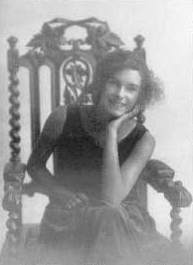
Jean Batten 1923, aged 15. Permission Batten Family Collection
Dreaming of the Skies
The family moved from Rotorua to Auckland when Jean was four. Jean’s school and teenage years were a strange and turbulent time. Although she went to a private school and the family were never on the bread line, money was always an issue. This was possibly the effect of World War 1 and later the personal politicking between the warring parents. Since Jean’s birth, the family had been demarcated along gender lines: Ellen, with Jean, against husband Fred and Jean’s brothers. Jean went to the ‘Ladies College’ in Remuera; the boys went to a State school. When the parents finally split in 1920, Ellen took Jean; to her, the boys were Fred’s concern.
Ellen was free-spirited and ambitious, withan aggressive determination that might, in later times, have been described as ‘feminist’. These notions were amplified after her separation from Fred. She instilled in the young Jean the idea, radical for its time, that to succeed in the world she must compete with men in male pursuits. At that time flying was the most daring, dangerous and exciting activity on earth: modern, largely untested and spectacular. It was the most male of male pursuits. When Ellen started taking Jean to watch the flying boats at Kohimarama Harbour, the outings were as much for the mother’s benefit as they were for the daughter’s. Jean’s biographer Ian Mackersey says in his book Jean Batten – Garbo of the Skies:
“One cannot escape the feeling that, as with the picture of Bleriot she had pinned on the wall, it was principally her own subconscious frustrations and intense personal fascination that drew Ellen to the launching ramp on the beach.”
Jean’s interest in flying grew. Fred and Jean went to hear Australian ace Charles Kingsford Smith speak at a celebratory dinner in Auckland in 1928, after his flight across the Pacific. Here, she announced to her astounded father and the bemused Australian flying ace (who had stopped to chat to the pretty teenager) “I’m going to learn to fly.”
Jean’s interest became part of the fight between her warring parents. As Mackersey notes, “[Fred] regarded the whole notion [of Jean flying] as preposterous, ‘It’s far too dangerous,’ he said, recalling the many flying accidents he had witnessed on the Western Front,” and implying that such pursuits should be left to the blokes. But Jean had other ideas. On a visit to Australia in 1929, she persuaded Ellen to seek out Kingsford Smith to take her for a flight in the Southern Cross. Ellen agreed, doing everything in her power to support the teenager’s flying aspirations.
Learning to Fly
In 1930, Jean and Ellen left Auckland for London. The move was ostensibly to further Jean’s musical education (she was a gifted pianist) but London was also the centre of the aviation world.
They first stayed with Jean’s brother John, who had left New Zealand with a small allowance from Fred and was now building a career as a stage and film actor. At the time of their arrival he was filming the starring role in the major film Under the Greenwood Tree at ElstreeStudios. John’s acting career had taken him from New Zealand to Australia and Los Angeles. He had earned some money in the United States, but had lost much of it in the 1929 Wall Street Crash. While his screen roles were not to become historic, he was an actor of some repute during the 1930s and 40s. During World War II he served in the Royal Navy but was given six months leave to act in the Ealing Studios’ wartime film For Those in Peril.
Shortly after her arrival in England Jean joined the London Aeroplane Club and started taking lessons at the Stag Lane aerodrome – gaining her ‘A’ (private) license in December 1931. By this time aviation was past its infancy and women flyers were not unusual. Jean said later that she took to flying ‘like a penguin takes to water’. Other flying pupils at the time remember her differently: ambitious and determined, but a slow learner and terrible at landings.
Throughout her apprenticeship, her publicly stated main focus was to be the first person to fly between England and New Zealand. To those around her this notion was patently ridiculous, but she was undeterred. She applied herself assiduously and, after a brief return to New Zealand, gained her commercial license in mid-1931.
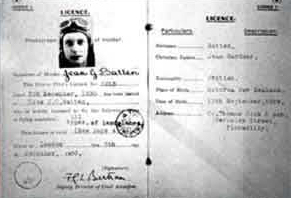
Jean Batten’s licence issued 5 December 1930, London. Permission The Dominion, Wellington
First Attempts
Jean was resolute in her determination to complete the flight from England to New Zealand, and to achieve more than ‘just’ this. As Ian Mackersey says, she “had an almost messianic faith in herself, and an unshakeable conviction that she had a significant role to play in putting New Zealand womankind on the map”. With this self-belief and sense of purpose came the notion that it was the duty of others to fund her flights. Despite the later embroided self-depiction of her state of affairs, her own resources were meagre: The post-ware depression hit her father’s Auckland dental practice hard and his allowances to her had dwindled to nothing. She had sold her piano and long since spent the proceeds.
But she still managed to fund her way into the sky. Jean was physically attractive and was aware of her allure. On several occasions, besotted men gave her large sums of money for her missions – in the case of Kiwi RAF pilot Fred Truman, his entire life savings . Many were under the impression Jean would marry them. She never married.
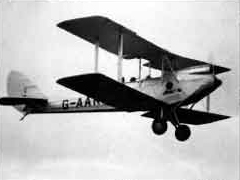
Jean Batten’s aircraft Gipsy Moth G-AARB, 1934. Permission Shirley Lainé
Jean’s flying skills improved on a parallel with her powers of persuasion. In 1932, she was virtually gifted a second-hand Gipsy Moth bi-plane by the elegant, public-school educated and infatuated Victor Doree, who borrowed the purchase price from his wealthy linen-merchant family. Such patronage was to set Jean on the way to achieving all her aspirations for fame and success.
It is hard to make a comparison between the long-distance aviators of the 1920s and 30s and today’s glitterati, but in their time they were daredevils and heroes; real-life stars, celebrities made by the cinema newsreel and newspaper flash-bulb. Jean had won her commercial license, but was not interested in merely making flying her job. She wanted to break records. She wanted to be the object of adulation.
In 1933, she left England to fly to Australia. English aviatrix, Amy Johnson, had made it in 20 days, three years earlier and Jean had to break that record. She wanted to make it in 14 days.
It didn’t happen on the first attempt, engine failure in India bringing the mission to an untimely end. This was the first time Jean had flown away from England and the first time she had flown over the sea or the desert, which were no small feats in the tiny, flimsy bi-plane. But for Jean Batten it was failure and a pot-hole on the road to destiny.
Her second attempt ended even closer to England. She ran out of petrol over Italy and had to make a dangerous emergency landing between Rome and Marseilles. With the plane slightly damaged in the landing she was grounded in Italy for a week, thus destroying any chance of breaking Amy Johnson’s record. She returned to England.

Jean Batten surrounded by Welcome Committee and crowds after her safe landing at Mascot Aerodrome, Sydney 30 May 1934.
Permission MOTAT, Auckland
Third Attempt: England to Australia
Jean took off again on May 8th 1934: destination Australia. Battling the elements, she reached Darwin in 14 days and 22 hours, not quite a day longer than her stated goal but smashing Amy Johnson’s time by five days.
Charles Kingsford-Smith now had cause to remember Jean’s fateful declaration of six years earlier, and would wryly regret the two pieces of advice he’d offered “Don’t attempt to break men’s records – and don’t fly at night.” Of course, as Jean was often to repeat, “I made a point of ignoring both of them.” She received a hero’s welcome in Australia, and although she travelled by sea to New Zealand (the Gipsy Moth would not have made it across the vast Tasman Sea) the welcome at home was rapturous.
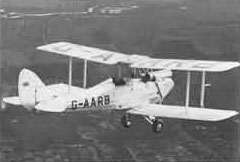
Jean Batten flying over Brooklands, England in G-AARB on her way to Australia in 1934.
Permission Shirley Lainé
Jean made a six week aerial tour of New Zealand. She gave speeches and attended civic functions, the célébritée du jour.
She flew back to England from Australia, the first woman to make the return flight. Again she gave talks and attended receptions in her honour. She was employed to give talks accompanying an RAF recruitment film – an unprecedented move, as at that time such employment was a bastion of male privelege.
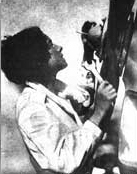
Jean Batten with Percival Gull c.1936 Permission MOTAT, Auckland
Flying Records
Thanks to earnings from her two successful flights – proceeds of her overflowing lecture/cinema tours, fees from GaumontBritish and the Express, and a major endorsement deal with Castrol (advertisements with Jean’s image began to appear with the slogan “If there were a better oil than Wakefield Castrol I would use it”) – Jean was able to upgrade the Gipsy Moth. With the help of a generous cheque of £1000 from Lord Wakefield after her Australia flight, she bought a Percival Gull monoplane. With its lightweight metal propeller, hydraulic brakes (the Moth had no brakes), an automatic petrol pump, landing flaps, a 200 hp engine and an extra fuel tank, the Gull was the machine Jean would break new records in.
Now very much the object of public fascination in England, Australia and New Zealand, Jean was preparing for another long-distance flight. this time across the SouthAtlantic between West Africa and Brazil. The record time for the route, 85 hours and 20 minutes, was held by Scotsman, Jim Mollison. Mollison enjoyed a dandyish reputation and was self-described as the ‘flying playboy’. His practice of consuming large quantities of brandy before, during and after long distance flights was legendary.
Jean took off from France for Casablanca on November 11, 1935, landing at her destination nine and a half hours later – an unintentional record. Then on to Thies in Senegal, from where she would leave for South America. Freak storms over the Equator made the Gull’s instruments go haywire and, with the compass out of action, Jean was convinced she was off course. It was only when the weather cleared and she saw cargo vessels on shipping routes that she knew she was heading in the right direction.
She made Port Natal, Brazil, in 61 hours and 15 minutes, almost a day faster than Mollison.
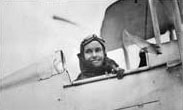
Jean Batten at Rongotai Airport, Wellington, NZ c.1936
Permission of the Alexander Turnbull Library, National Library of New Zealand, Te Puna Matauranga o Aotearoa, must be obtained before any re-use of this image.
The receptions she had been honoured with in Australia and New Zealand were repeated in South America, taking the levels of hero worship to new heights. In Brazil she was awarded the Order of the Southern Cross, an honour never before given to a member of the British Empire who was not of royal birth. She was made an honorary member of the air force in three countries and ‘the dashing and fearless aviator’ was rushed by crowds of well-wishers everywhere she went.
She was, by now, one of the most famous aviatrixes in the world and the public waited anxiously for the announcement of her next feat. They were not to be disappointed. It was a flight from England to Auckland: across the world to the edge of the Empire.
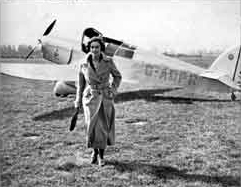
Jean Batten with Percival Gull c.1936 Permission MOTAT, Auckland
She took off on the 5th of October 1936. It was 3.30am when, bathed in autumn moonlight she walked out to her aeroplane, but there was already an enormous crowd of reporters, newsreel cameramen, photographers and fans gathered to see her off. As she crossed the English Channel, the frightening enormity of the flight dawned on her: 14,000 miles, including 1300 miles over the treacherous Tasman.
Jean Batten wearing her renowned white flying suit c.1936 Permission of the Alexander Turnbull Library, National Library of New Zealand, Te Puna Matauranga o Aotearoa, must be obtained before any re-use of this image.
The Percival Gull performed brilliantly. She made Australia in six days, which was less than half the time it had taken in the Gipsy Moth three years earlier, setting a new solo record. Her second touchdown in Sydney rivalled her first as adoring crowds came out en masse. Not content to merely fly across the world, Jean made sure she was always glamorous, so fostering and encouraging the popular perception of her as ‘the Garbo of the Skies’. She always brought evening dresses with her for receptions and would emerge from the cockpit after long flights wearing makeup and dressed in a white flying suit.

Jean Batten wearing her renowned white flying suit c.1936
Permission of the Alexander Turnbull Library, National Library of New Zealand, Te Puna Matauranga o Aotearoa, must be obtained before any re-use of this image.
Although Australia wanted her to stay, she was determined to cross the Tasman. In the days leading up to her departure she had been criticised in a newspaper editorial for undertaking the flight because of the time and money it would cost to rescue her if she crashed. She replied with a short statement designed, through gallantry and sacrifice, to override the pettiness of the original criticism:
“If I go down in the sea no one must fly out and look for me. I have chosen to make this flight, and I am confident I can make it, but I have no wish to imperil the lives of others or cause trouble or expense to my country.”
She took off at 4.40am, October 16, 1936. The flight took 10 and a half hours, during which time thousands on both sides of the Tasman held their breath, waiting between regular news updates of her flight.
She said later that she almost “lost her nerve” flying across the Tasman. Encountering terrible weather, she was convinced she was off course. She did not see land until she was almost over it, and before she reached the Taranaki coast she had practically given up hope, despite her instruments telling her she was still on course.

Jean Batten relaxing in Wellington, New Zealand, at age 60, January 1970. Permission The Evening Post, Wellington
New Zealand – the Final Destination
News of Jean’s touchdown at Auckland airport caused 13 miles of traffic jams as New Zealanders welcomed home their adventurous daughter. Returning to her birth place of Rotorua, she was once again guest of honour of local Maori, as she had been after the 1934 journey. She was gifted a chief’s feather cloak and given the title Hine-o-te-Rangi – “Daughter of the Skies”.
After several months rest in New Zealand and Australia, she flew back to England. She made the trip in five days and 18 hours; she now held the world record in both directions. Yet she had decided that this would be her last long distance flight. She was happy with her achievements, and the flying world also recognised what she had achieved. In 1938, she was awarded the medal of the Federation Aeronautique Internationale, aviation’s highest honour, being the first woman to receive it.

Jean Batten who was presented to Their Majesties at the second Court on May 12, 1936 by Mrs W J Jordon, wife of the New Zealand High Commissioner. Her gown was of satin of eau de nil tint and embroidered with seed pearls and diamante.
Permission of the Alexander Turnbull Library, National Library of New Zealand, Te Puna Matauranga o Aotearoa, must be obtained before any re-use of this image.
During World War II Jean gave lecture tours, with her fees going to the war effort. There is some mystery as to why she was never accepted into the Air Transport Auxiliary. Possibly it was due to double vision incurred in an earlier crash, or perhaps because she wasn’t a team player. Whatever it was, the war signalled the end of Jean’s long distance flying adventures, and the end of Jean in the public eye.
After the war she lived in Jamaica and then Spain. She continued to live with Ellen until her mother’s death in 1965, the devotion of both women growing stronger with the years. When Ellen died, Jean sent a rare note to her brother Harold; mother and daughter having kept no regular correspondence with the male members of the family. Harold later showed the note to Jean’s estranged brother John, who said “she and mother were so close, it must have been like husband and wife. She must have been desolate”.

Jean Batten with her mother, Ellen. 12 December 1936. Permission of the Alexander Turnbull Library, National Library of New Zealand, Te Puna Matauranga o Aotearoa, must be obtained before any re-use of this image.
Jean Batten’s last visit to New Zealand was in 1977 where she was guest of honour at the opening of the Aviation Pioneers Pavilion at Auckland’s Museum of Transport and Technology in Auckland. It would be the last time many heard of her. After the visit she returned to Spain, living a quiet, reclusive existence; but the influence of Ellen would stay with her the rest of her life.
Because of her reclusiveness in later life, it was over a year before those who had kept up some form of correspondence with Jean, on not hearing from her, began to worry. It was 1983. Not only her beauty and stellar celebrity, but also her eccentric and withdrawn habits had come to mirror her cinematic counterpart, Greta Garbo. It was accepted that Batten wanted ‘to be alone’.
At the instigation of Batten’s London publisher, Bob Pooley, some cursory investigations were advanced by the New Zealand Government. These inquiries and those of her remaining family were slowed by a real concern not to invade Batten’s private world, and they proved fruitless. Despite some media speculation about her whereabouts, it would take four and half years and the tireless detective work of documentary film-makers Ian and Caroline Mackersey, to uncover the mystery and bureaucratic obfuscation that hid Batten’s lonely death. In 1987 the Mackerseys discovered that she had died in Majorca, of complications following a minor dog bite. The bite had become infected, but Batten refused antibiotics or other medication, believing like her mother in the healing power of positive thought.The site of her unmarked grave was later found in Palma. This bizarre end hinted at the sad and elusive private life behind the fame, beauty and achievement. It was an tragic demise that could only serve to further the Batten legend.
A plaque now rests on the wall above the ignominious paupers’ grave where she is buried. The Times (London) paid tribute to her fame and daring in a major obituary, and Auckland International Airport bears her name.
Jean Batten took New Zealand from the edge – “A magnificent woman and her flying machine.” – With determination and skill she took on the elements in a dynamic and unexplored new technology, in the process making the world seem smaller, and linking New Zealand with that world in a more tangible way than ever before. She captured the imagination of an age and her feats of daring broke barriers of distance, time and gender.
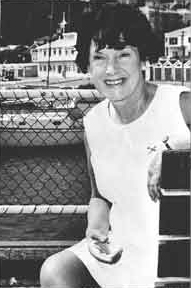
Jean Batten relaxing in Wellington, New Zealand, at age 60, January 1970. Permission The Evening Post, Wellington

Jean Batten
Permission MOTAT, Auckland
Web References:
Biography and information about Batten’s aircraft:
Auckland International Airport’s website
http://www.auckland-airport.co.nz/communityaviators.php?batten
[accessed January 2000]
Another great website on Batten is provided through Monash University:
http://www.ctie.monash.edu.au/hargrave/jean_batten_bio.html
[assessed September 2006]
Jean Batten’s autobiography, My Life, as well as lots of great pictures, is now available on-line at:
http://www.nzetc.org/tm/scholarly/tei-BatMyL.html
[accessed September 2006]
Books:
The definitive biography is Ian Mackersey’ssuperbly researched and fascinating, Jean Batten: Garbo of the Skies, (1990) Macdonald & Co, UK
http://www.nzbooks.com/
Also see Mackersey’s on-line DNZB entry at:
http://www.dnzb.govt.nz/dnzb/
[accessed September 2006]
Others works used:
Laine, Shirley. (1989), Silver Wings: New Zealand Woman Aviators, Grantham House, New Zealand
Batten, Jean. (1938), My Life, George Harrap & Co., UK
Batten, Jean. (1934), Solo Flight, Jackson & O’Sullivan Ltd, Australia
Articles:
Somerville, Ann. (1999), “Jean Batten: Hine o te Rangi, Daughter of the Skies”, Memories, no. 20, Vol. 3, October 26
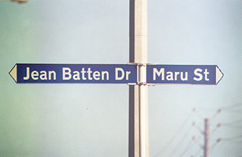












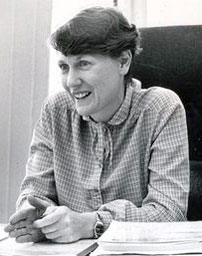
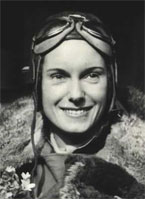
For anyone who has not read Fiona's book on Jean it is a must. And John did you get any info on the piano?
This is an interesting entry about Jean Batten, but it's unfortunate that the mythology of Batten bleeding rich men for money is perpetuated. It's to the credit of her biographer Ian Mackersey and his wife Caroline that they unearthed so much information about the aviator, particularly the whereabouts of her grave and the circumstances of her death. However, Mackersey did not like Batten. He believed that she had snubbed his mother on a train journey when he was a child, something he relates in the Introduction to his biography. In fact, Batten was on the edge of nervous exhaustion and headed the next day for a retreat in the South Island where she stayed in seclusion for some weeks. Mackersey's research is tinged with this hostility and the basis for his claims about her gold digging is based on the evidence of the widows of two men with whom Batten had had relationships. Fred Truman's widow was literally on her death bed when she made her claims about Jean. Her husband, who apparently had a fondness for drink, had been dead some thirty years and how he lost his pension before he met his wife is open to question. The Doree family's claims about Jean are, quite simply, appalling. They all turned out, complete with a camera crew, to farewell her in the Gypsy Moth they had provided. When she crashed a week later , they turned their backs on her and left her to find her own way back from Karachi. She was rescued by Lord Wakefield who became her financial sponsor: she was just one of several young women pilots (including Amy Johnson) whom he and his wife helped over the years. It seems clear that the Dorees wanted a heroine like Amy Johnson to enhance their status and when she failed at the first attempt they were done with her. Victor Doree married an heiress not longer after this. My novel, The Infinite Air, based on the life of Jean Batten, sets out to rebut these unflattering myths , based on the flimsiest of evidence (published Vintage NZ 2013, Aardvark/Gallic Books UK 2016, and as Jean Batten: Pilotin pub. Weidle Germany 2016, as Fille de l'air ,pub Sabine Wespieser , France 2017)
Hello Everyone , I have recently purchased Jean Batten's piano, a lovely old Moritz Gude made in Berlin . If anyone has any information on this piano I would be delighted to hear from you in order to Authenticate it properly. All I can gather is , it was auctioned in possibly Rotorua, and it was then shipped to Gisborne . It was then sold to a dear friend here in Oamaru which whom I bought it from . The Piano had been in storage for 13 years. Jean knew my Father Douglas McCabe who was a Corsair Pilot in the 2nd world war. Again ..I would be so delighted to hear from you if you have any photo's or details regarding this lovely old piano and this remarkable Lady , turning 107 years old today Cheers , Country Singer/Entertainer John McCabe
Really it's amazing - this woman had so many adventures, we have to salute her. I would like to become a Pilot, but due to other reasons I can't be.
Jean Batten is a dynamic woman.
I was wondering what influenced the women after her and their attitudes towards her but I can't find any information on it ? I was hoping something would be on here
Nowadays, Jean's mother might be diagnosed with Narcissistic Personality Disorder.
I was looking with interest at the Jean Batten reference on your website. My father was a pilot and, in 1979, was with British Aerospace at a small air show at Cranfield, England. That year Jean Batten's book "Alone in the sky" was published. My father was demonstrating a HS 125.700 executive jet at the show and when British Aerospace heard that Jean Batten was at the show, they offered her a flight in the cockpit with my father, which she accepted. Afterwards she gave my father a copy of her new book with the following written inside "To Captain Trow, best wishes and many thanks for the flight in the HS.125.700, Jean Batten, Cranfield, Sept 79". My father recently gave me the book. I am yet to read it but I wondered if there was any Museum in New Zealand that might be interested in, perhaps, borrowing it. I appreciate that there may be little interest in her all these years later, but it seems to me that this is a precious and unique copy of the book. Any feedback would be appreciated, especially from any of her relatives. Marcus Northants, UK
What a fantastic website. I am organising a unit of work based on Arthur Costa's Habits of Mind and intend to link famous NZers to the various traits, i.e., Persisting -Hillary; Taking responsible risks - Batten. This site is going to be a brilliant resource. It's about time we started celebrating these people. Teacher Hamilton, New Zealand
I was very interested in your article about Jean Batten as she was my grandfather's cousin and certainly bears a strong family resemblance to one of my aunts now unfortunately deceased. Thank you very much. London, UK